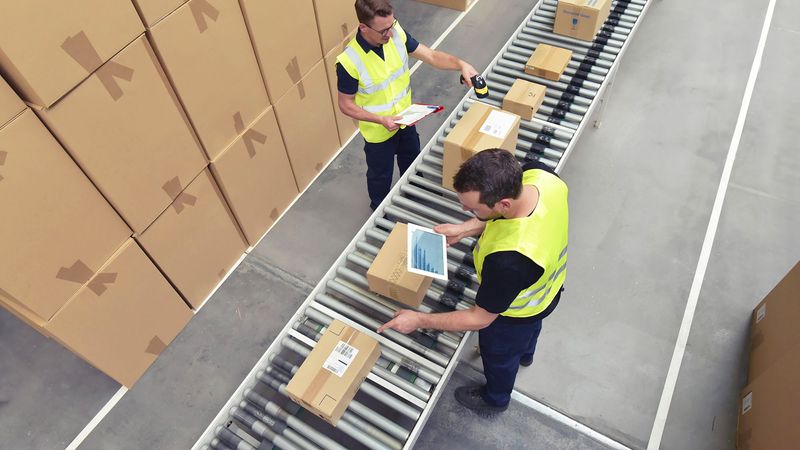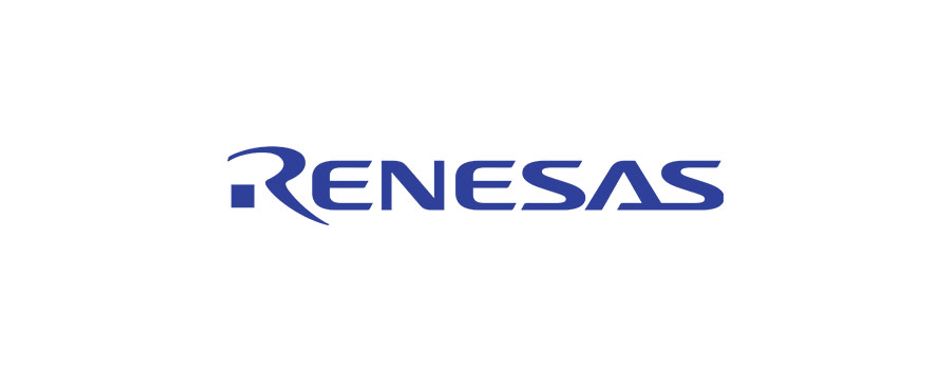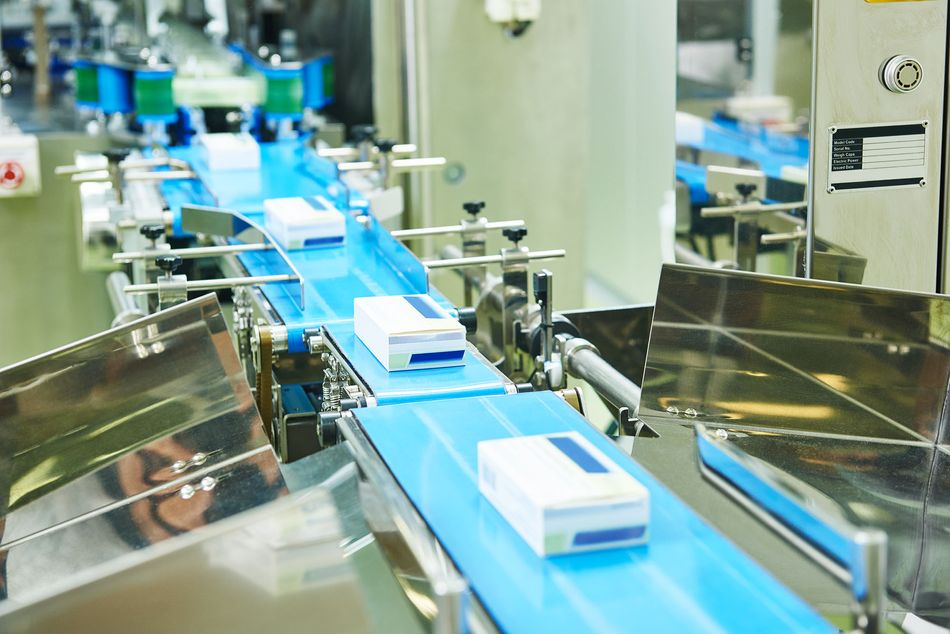Smart Tracking Trends and Technologies
An overview of smart package tracking trends and technologies

Tags
This is the first article in a 40-part series diving deep into cutting-edge semiconductor topics. The series will showcase how the latest advances in semiconductor technology are making positive impacts on our lives. This series is sponsored by Renesas Electronics. Through the sponsorship, Renesas Electronics supports the next generation of connected engineers.
What is Smart Tracking?
Smart asset tracking solutions utilize wireless technologies to track, trace and monitor various conditions of valuable goods such as temperature, humidity, and shock with the help of tags, labels, and tracking devices. Several wireless technologies are used by smart asset tracking solutions for indoor and outdoor asset tracking, depending upon the use case.
Industries worldwide realize the significant benefits of smart tracking trending to become a ubiquitous function. They implement use-case-dependent best-fit solutions to locate and monitor valuable goods in real-time, improving logistics and enhancing profitability giving them a competitive edge. According to Mordor Intelligence Asset Tracking Market was valued at USD 17.14 billion in 2020 and is expected to reach USD 34.82 billion by 2026 at a CAGR of 13.45% during the forecast period 2021 - 2026.(1)
The following sections describe smart tracking trends, highlighting each solution's advantages and disadvantages as a guide for the technical decision-makers to choose the right fit technology, briefly introducing a new proof-of-concept smart tracking label from Renesas.
High-Level Trends to Watch in Smart Tracking
Inventory Control Avoiding Revenue Loss
Revenue leakage is one of the significant challenges for companies worldwide. Currently, only 50% of the companies have end-to-end visibility of their supply chain, which results in economic losses.(2) Through Smart Tracking, companies can have complete control of their inventory by visualizing their valuable goods at every stage of their supply chain. The smart tracking tags can track, trace and monitor the conditions of the items and provide consistent visibility, thus ensuring the valuable goods are safe and not lost.
Assets Condition Monitoring
Companies want to ensure that their valuable assets are always in good health, especially for fragile items such as food, medicine, and mechanically sensitive goods, reach the correct location in their proper condition. Smart tracking solutions can track the location and monitor the conditions of assets, such as temperature, humidity, and shock. Companies can further benefit from a smart tracking system by maintaining the required environmental conditions, which helps prolong the life of assets and ensure their quality.
Real-Time Monitoring through Cloud Computing
Cloud computing is the online utilization of data, storage, and computing power. Cloud-based asset monitoring eliminates the risk of losing assets or the assets losing their desired properties in a supply chain without early notification. It maintains an online inventory record, and companies can track and trace the assets remotely. Cloud-based technologies work in real-time; it updates the inventory simultaneously whenever something is purchased, sold, or moved. Additional features such as package status detection enable business models based on the consumption of goods starting at the time of unpacking.
Companies worldwide incorporate advanced technologies such as cloud computing into their asset management system. (3)
Early Prediction of Asset Conditions using Artificial Intelligence
Thanks to Artificial Intelligence (AI), companies can now easily forecast trends based on history and the current and future environmental conditions to improve quality or optimize the maintenance cycles of the assets. It helps companies prepare in advance and rectify the problems before they occur. The smart asset tracking system based on Artificial Intelligence can send alerts for upcoming maintenance and predict assets conditions, thus increasing efficiency and saving revenue for the company.
Smart Tracking Technologies Impact on Packaging
There are currently numerous smart asset tracking technologies and systems available. Each technology has its benefits and challenges; it is critical to apply the right technology mix of RF, sensor, and power to a given tracking scenario. For example, inventory tracking within a warehouse requires different properties than a tracking system for cargo traveling across the continent. Classifying technologies depends on several key factors: range, power consumption, cost, data rates, accuracy, mobility, tracking frequency, and so on. This article categorizes asset tracking technologies into short-range and long-range technologies.
Short-Range Asset Tracking Technologies
Short-range asset tracking technologies are well suited for indoor environments and implemented to track and trace the asset within a smaller distance of a few meters. Short-range asset tracking technologies require low power consumption and are less costly. Some require dedicated infrastructure, while others are compliant with consumer devices. This section briefly describes some of the short-range asset technologies, namely, BLE, RFID, Wi-Fi, and UWB, emphasizing the positives and negatives of each technology.
BLE
Bluetooth Low Energy (BLE) is one of the most ubiquitous low-power wireless technology used today to connect devices, ranging from the internet of things (IoT) applications to mobile phone gadgets. BLE is a global standard, operating in the ISM-band on 2.4GHz frequency and is crucial for applications that run on limited batteries for extended periods. The salient feature of BLE is its worldwide compatibility, low power consumption, low cost, low maintenance, and easy deployment.
Almost every smartphone, computer, or tablet comes with in-built Bluetooth radios, so there is no need for specific infrastructure, and one can use a smartphone to scan BLE tags and loggers. It is classified as a short-range category as it can support a range of several tens of meters.
Moreover, BLE solutions can read many more tags in a short amount of time and in denser scenarios (e.g. more goods stacked on a pallet) than other short-range wireless technologies such as RFID. Additional functions can also be added, such as deploying various temperature and humidity sensors. Besides the identity information, BLE tag-based systems can also provide the location of the tags and assets at hand, which can be used for proximity solutions. BLE uses less power than all other short-range wireless technologies such as Wi-Fi, except for the passive ones such as UHF and NFC, which typically do not actively transmit.
If equipped with the right sensors, such as accelerometers, BLE tags can also detect motion; thus, these tags can be programmed to change their beacon interval if there is no motion for a certain period; this feature can help track assets on the move and extend battery life. Some of the application scenarios of BLE are tracking assets in real-time in warehouses, livestock tracking, and wearable devices. Hence, BLE is a low-cost solution for asset management due to its low cost, low power consumption requiring tiny batteries, and ubiquitous availability of access points in any mobile device today.
RFID
Radio-Frequency IDentification (RFID) uses electromagnetic fields to identify and track tags attached to objects. An RFID system typically consists of a tiny radio transponder, receiver, and transmitter attached to an antenna. There are two kinds of RFID tags, active and passive RFID.
Active RIFD tags have an internal power source. They are available in two different configurations. A beacon will continuously send signals, and they are used to provide information for temperature, humidity, and shock. In contrast, a transponder uses its power typically for data logging and only transmits data when triggered by a transmitter. On the other hand, Passive RFID tags have no internal power source and support a lower signal range. They are smaller and essentially have an infinitive life expectancy compared to active RFID tags.
However, they require a specific infrastructure consisting of special readers. RFID-tags based on NFC have a minimal range of up to a few ten centimeters at best, while UHF tags support a larger distance up to several meters but cannot support very dense scenarios or scenarios involving liquid close to the tags. Due to their low cost, RFID is used in various sectors such as retail and healthcare. A typical use case is in a retail setting where the tag is used to track the unbilled items removed from the shop.
It is also possible to integrate RFID with sensors, but with a limited connection distance, they don’t offer similar functional performance and ease of use compared to BLE.
Wi-Fi
Wi-Fi tracking is typically used in warehouse scenarios combining sensor data with triangulation location information. The availability of Wi-Fi Access points is a critical factor while selecting Wi-Fi-based solutions for smart asset tracking. The deployment of the Wi-Fi solution needs router configuration, and it's not as simple as in BLE. The transmission range of Wi-Fi is significantly more than BLE, but it also requires significantly more power. Thus, compared to BLE, Wi-Fi consumes more energy for continuous location tracking applications, so it's not ideal for tags.
Ultra-Wide Band
The Ultra-Wide Band (UWB) is another radio technology that uses low power consumption for smart asset tracking. The clear advantage of UWB is its ability to locate the assets precisely up to centimeters (cm) level accuracy and its resilience to interference. UWB is ideal for tracking rapid movements because of its transmission speed, precision, and reliability. However, the downside of UWB is its poor interoperability. Unlike BLE, the tags are expensive, and the battery lasts only for a few hours/days at most due to its high peak-current consumption during transmit activity.
Wide-Range Asset Tracking Technologies
Low Power Wide Area Network (LPWAN)-LoRa, LTE-M, NB-IoT
The LPWAN technologies are categorized into wide-range asset tracking technologies due to their ability to support longer distances of up to 15km with a single gateway. The significant feature of LPWAN technologies is low power consumption. LPWAN technologies can transmit over a considerable distance while providing deep penetration capability to connect devices at hard-to-reach indoor and underground locations. However, the drawback of LPWAN technologies is their requirement for dedicated infrastructure and relatively high cost, including large and expensive batteries. Most of the LoRa frequency bands are not harmonized worldwide, requiring dedicated, regionally confined devices.
LPWAN technologies are best suited for low data rate applications. (5) Some use cases for LPWAN are maritime container tracking, consumer luggage tracking, people tracking, livestock, parcel tracking, etc.
Cellular- GSM, LTE, NB-IoT, and 5G
Cellular or Wireless technologies facilitate mobile device communication over areas comprising cells and transceivers, also known as cell sites or base stations. The most widely used transceivers in a cellular network are mobile phones.
Cellular technologies have evolved over the years from 2G (GSM), 3G (UMTS), 4G(LTE) to 5G. GSM (Global System for Mobile Communication) is the first generation of cellular technologies. the 4G and 5G standards are effective solutions for outdoor asset tracking. Their range is limited by the coverage and does not require local or specialized gateways. The latest 3GPP narrowband, low data-rate standard such as LTE-M and NB-IoT standards combine low power consumption with worldwide standards’ compatibility. With data rates ranging from tens of kbit/s to ~ 4Mbit/s, the underlying standards are ideal for LPWAN applications.
They can rely on a worldwide network of base stations and be supplemented through small local cell base stations to eliminate network subscriber cost as long as the tracked object is in a controlled environment. However, the hardware cost and required battery size are among the highest of terrestrial radio tracking solutions.
A new era in package tracking: The Dialog Semiconductor BLE Smart Label Demonstrator
The Renesas solutions team were introduced to a printed battery manufacturer headquartered in Berkeley, California, whose signature product is a credit card-sized, less than 1mm in height, flexible, disposable battery. Inspired by this cutting-edge piece of technology and the increasing talk about supply chain robustness, the team set out to use the battery to create a thin, low-cost Bluetooth® Low Energy (LE) label and beacon-findable logger.
They came up with a low power consumption proof-of-concept demonstrator, that has an integrated Bluetooth® LE DA14531 SoC, an 8-Mbit Flash (or an ultra-low energy 2-Mbit Flash), and several sensors (humidity and temperature, ambient light and 3-axis accelerometer) that is connected to the aforementioned printed battery creating a flexible label solution, slightly larger than a credit card and only ~2 mm in height.
Benefits of BLE Asset Tracking Label Demonstrator
The BLE Asset Tracking Label can communicate with any smartphone, tablet, or PC. It allows the user to scan a much higher number of labels from distance than RFID solutions and avoids the need to manually move items. The BLE demonstrator can be used to track, log, and monitor data, such as theft prevention, goods in a warehouse, stock tracking, and inventory.
Another significant advantage of the BLE label is that it is disposable - the inbuilt battery can be disposed of in household waste. The target applications include tracking people, livestock, industrial items, pharmaceutical goods, and other expensive goods in distribution. Through software extensions, these labels can also be used for signal triangulation-based locationing services such as Quuppa.
In a nutshell
This article gave an overview of smart asset tracking trends and technologies, highlighting each solution's key features that make them suitable for different use cases in indoor and outdoor applications. Following are the key takeaways:
Market Potential: Smart Asset Tracking has enormous market potential, with an estimated figure of USD 34.82 billion by 2026 at a CAGR of 13.45% during the forecast period 2021 - 2026.
Top Trends: Companies around the world are implementing smart asset tracking solutions to achieve the following objectives:
To have end-to-end visibility in the supply chain to avoid economic losses.
To track beyond the location by measuring environmental conditions using various sensors.
Early predict and monitor real-time conditions of valuable assets by using Cloud Computing and Artificial Intelligence.
Classification of Smart Tracking Technologies.
Selecting the right smart tracking solution for the use case is essential as each technology has its own merits and challenges. The smart asset tracking technologies are categorized into Short-Range and Long-Range technologies considering range as one critical factor for indoor and outdoor scenarios next to reader and RF connectivity infrastructure as another.
Short-Range Technologies: RFID, Wi-Fi, Bluetooth Low Energy (BLE), and Ultra-Wide Band (UWB) are indoor asset tracking technologies. All technologies except RFID can precisely track the location of an asset in the range of centimeters to meters. However, BLE has certain advantages over others due to its mature ecosystem, low cost, easy deployment, and low power consumption.
Long-Range Technologies: LPWAN, Cellular narrowband, GPS, and other Satellite technologies are the best choice for outdoor asset tracking. These technologies can support longer distances in kilometers but are costly, often consume more power, and require specific infrastructure.
About the sponsor: Renesas
At Renesas we continuously strive to drive innovation with a comprehensive portfolio of microcontrollers, analog and power devices. Our mission is to develop a safer, healthier, greener, and smarter world by providing intelligence to our four focus growth segments: Automotive, Industrial, Infrastructure, and IoT that are all vital to our daily lives, meaning our products and solutions are embedded everywhere.

References and further reading
2. Events R. reuterevents.com. [Online]. [cited 2022 2 17. Available from: https://www.reutersevents.com/supplychain/technology/more-half-companies-lack-end-end-visibility-their-supply-chains.
3. amazon. aws.amazon.com. [Online]. [cited 2022 2 17. Available from: https://aws.amazon.com/blogs/apn/asset-tracking-that-works-out-of-the-box-from-aws-iot-verizon-and-domo/.
4. intel. intel.com. [Online]. [cited 2022 2 17. Available from: https://www.intel.com/content/dam/www/public/us/en/documents/solution-briefs/simularity-ai-software-for-asset-management-solution-brief.pdf.
5. rfwireless-world. rfwirelessworld.com. [Online]. [cited 2022 2 17. Available from: https://www.rfwireless-world.com/Terminology/Advantages-and-Disadvantages-of-LPWAN.html.
Tags

